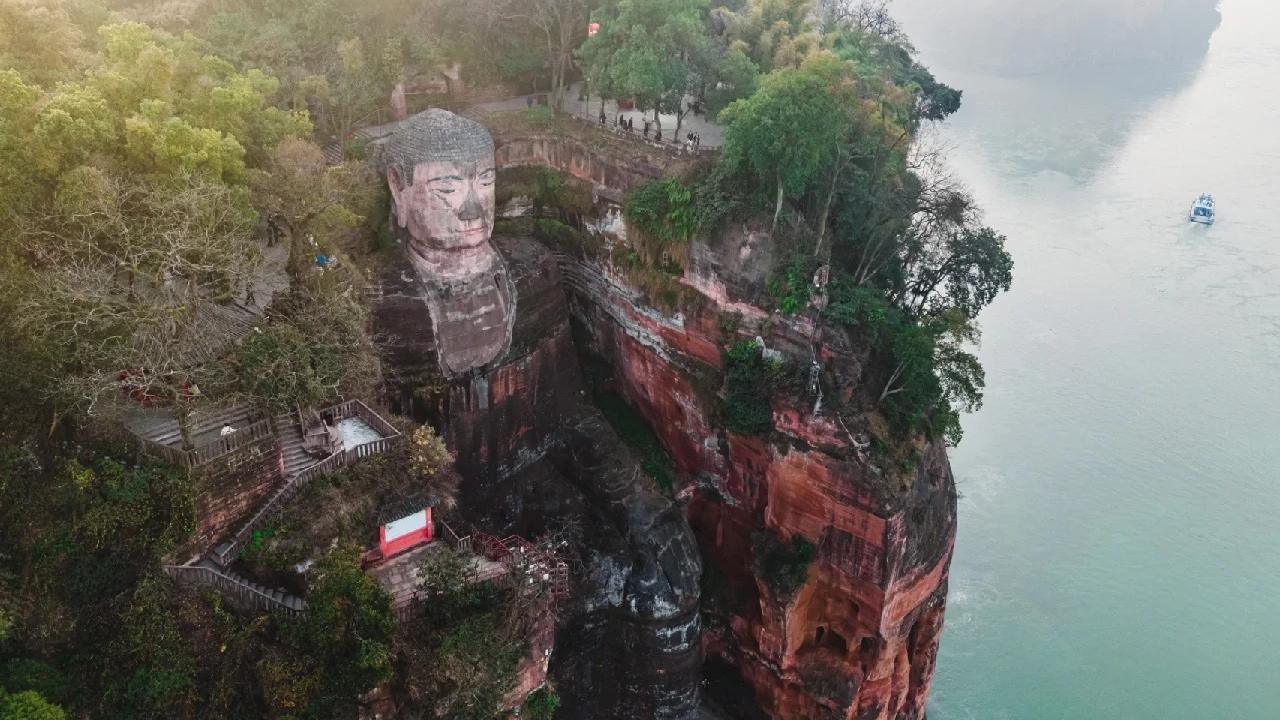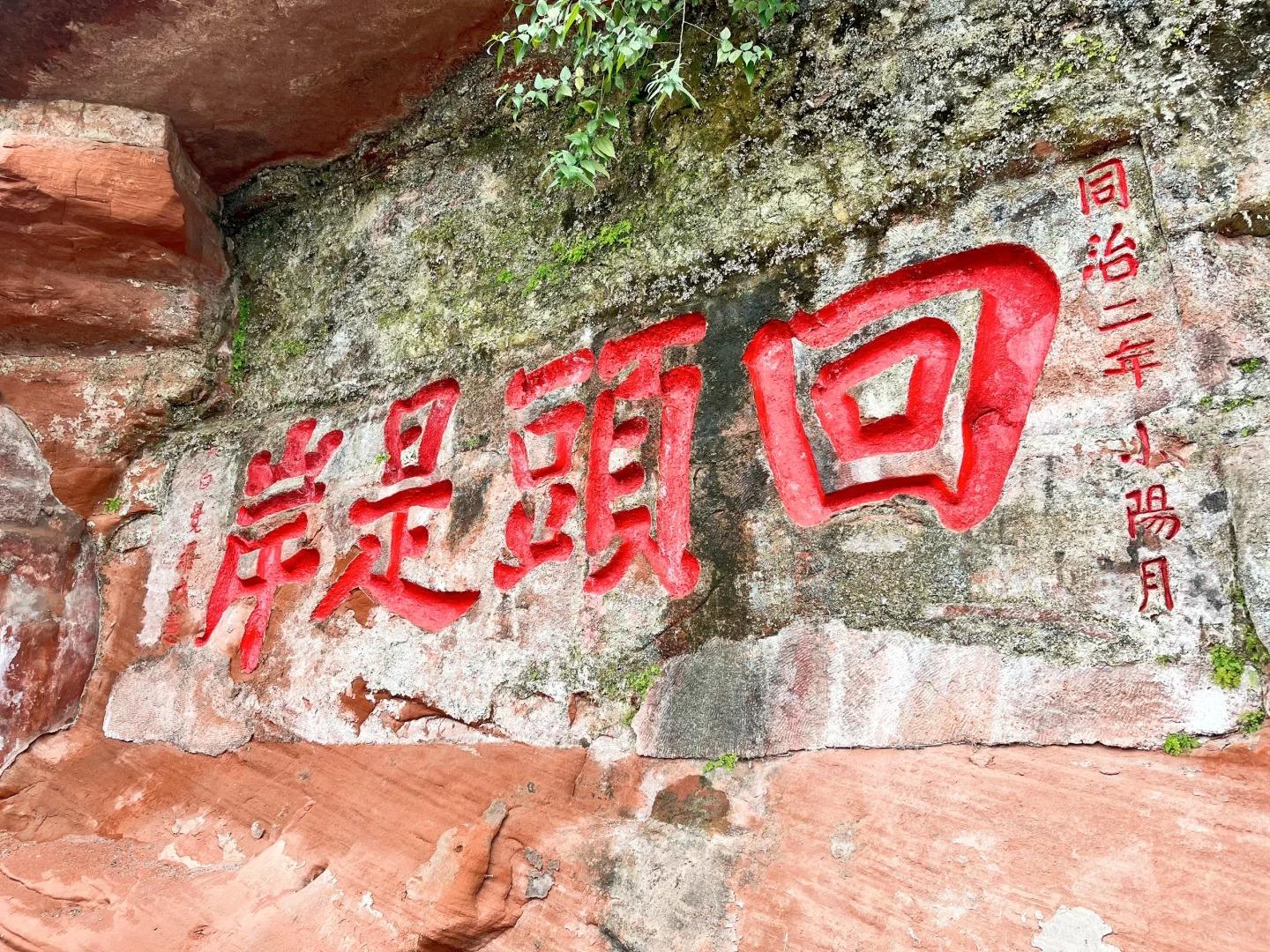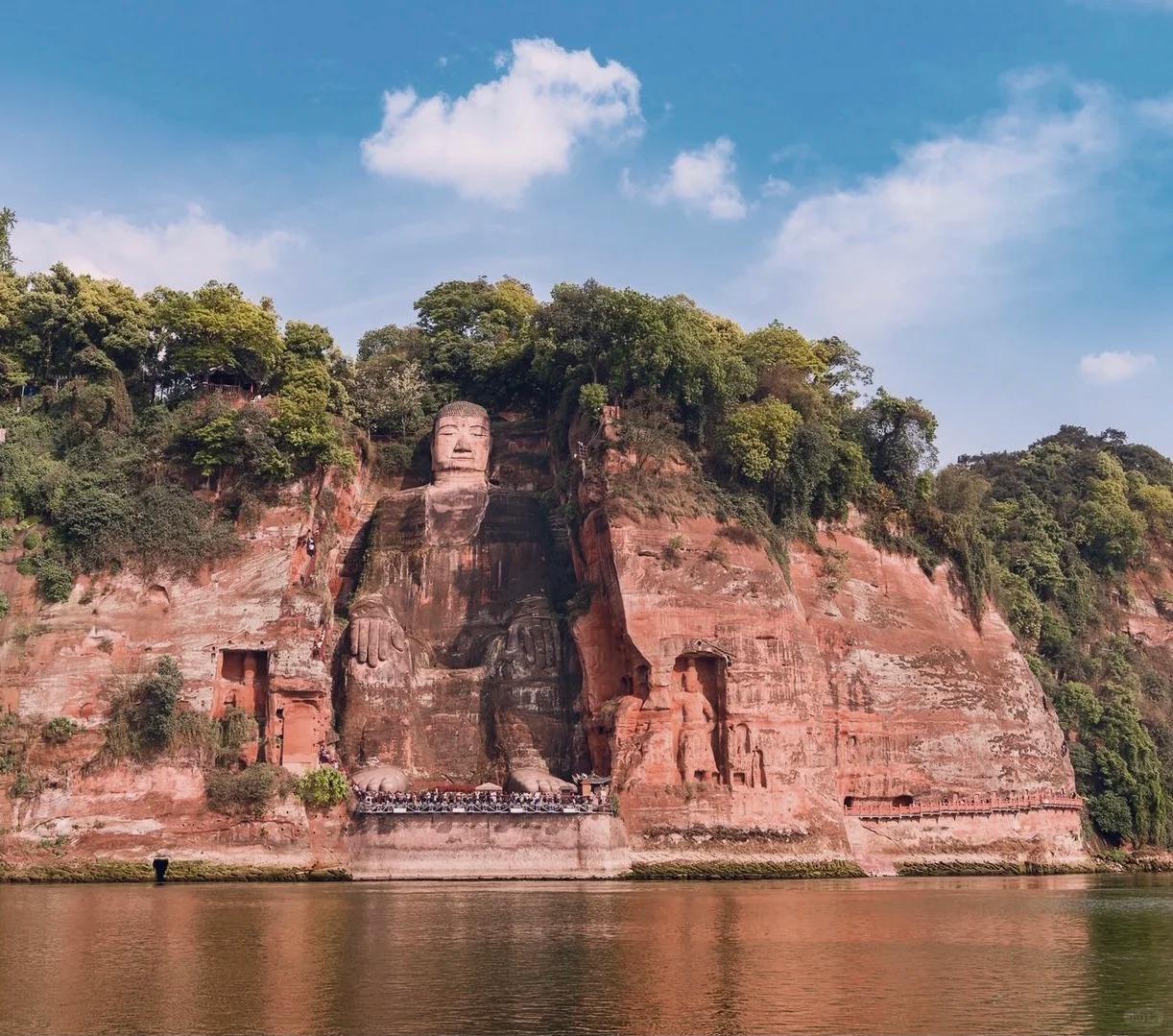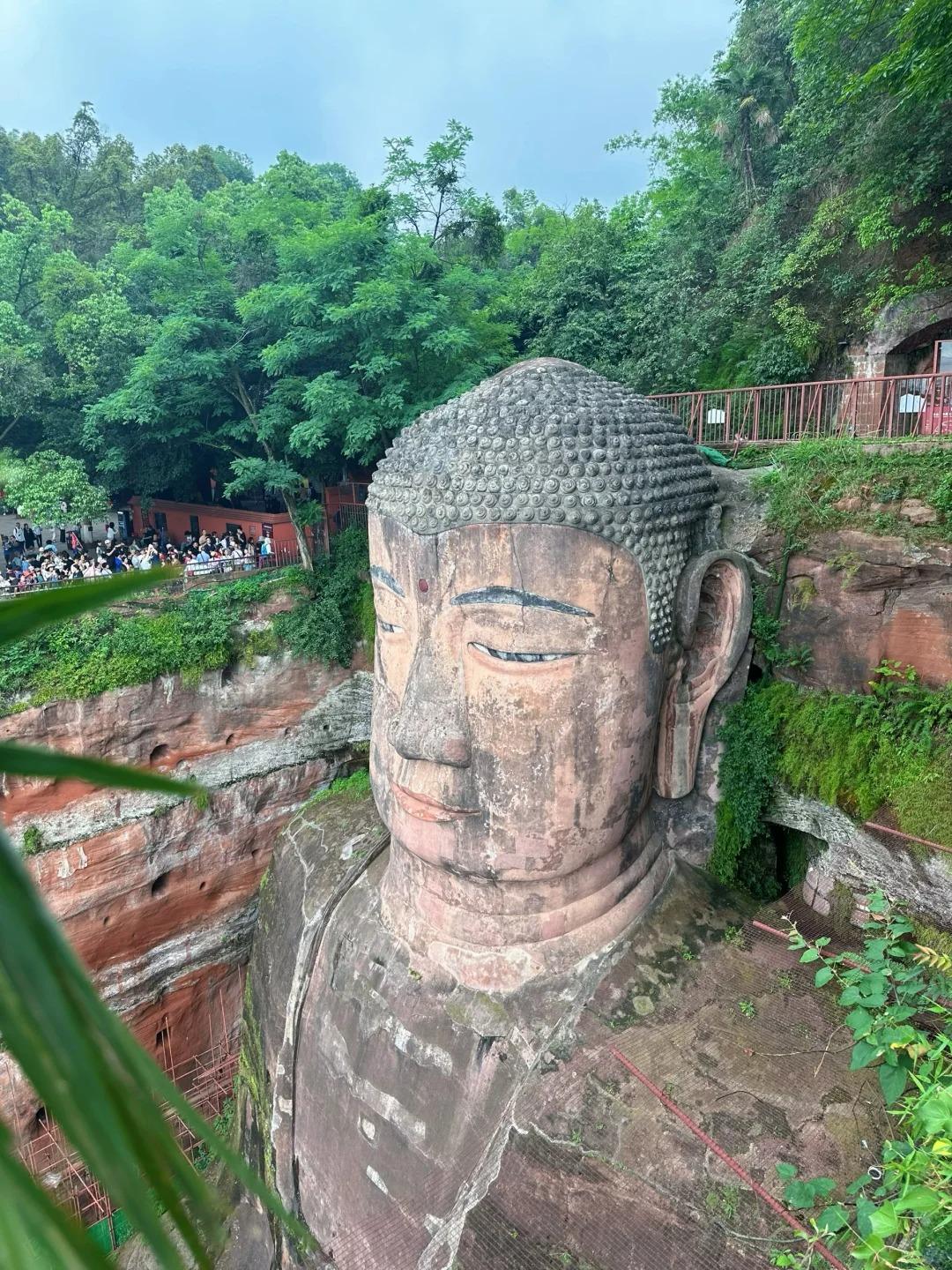Visiting Information
| Information | Details |
|---|---|
| Chinese Name | 乐山大佛 (Lèshān Dàfó) |
| Location and Address | No.2435 Lingyun Road, Shizhong District, Leshan City, Sichuan Province, China |
| Opening Time/Hours | 7:30 AM – 6:30 PM (April to October); 8:00 AM – 5:30 PM (November to March) |
| Entrance Fee | 185 CNY (peak season: April to October); 160 CNY (off-season: November to March) |
| How to Get There | By Bus: Take bus 3, 6, 8, 33, 58, or 161 to Leshan Giant Buddha stop By Taxi: Available from Leshan city center, approximately 20-30 minutes Note: There is no metro system in Leshan |
| Best Time for Visit | Spring (March to May) and Autumn (September to November) for pleasant weather; Early morning to avoid crowds |
| Contact Info | Tel: +86 833 230 2168 Email: [email protected] |
Overview
The Leshan Giant Buddha, located in Leshan City, Sichuan Province, China, is the largest stone Buddha statue in the world. Carved out of a cliff face during the Tang Dynasty, it stands at an impressive height of 71 meters (233 feet) and has been a UNESCO World Heritage Site since 1996.
Historical Background
Construction of the Leshan Giant Buddha began in 713 AD during the Tang Dynasty, initiated by a Chinese monk named Hai Tong. He hoped that the Buddha would calm the turbulent waters that plagued the shipping vessels traveling down the river. The project took 90 years to complete, finally finished by Hai Tong’s disciples in 803 AD. Since its creation, the Buddha has survived numerous natural disasters and has undergone several restorations to preserve its magnificent structure.

Architectural Features
- The Buddha Statue: The colossal statue depicts Maitreya, a Bodhisattva usually represented as a seated figure. It is carved into the side of Mount Lingyun, with its feet planted at the river’s edge and hands resting on its knees. The statue’s face alone is 14.7 meters long.
- Drainage System: An ingenious ancient drainage system was incorporated into the statue’s design. It consists of hidden gutters and channels that carry away rainwater and reduce weathering, contributing to the statue’s longevity.
- Surrounding Cliffs: The area around the Buddha is rich in Buddhist carvings and inscriptions. The cliffs on both sides of the statue are adorned with over 90 stone statues and 500 stone tablets, creating a comprehensive religious and cultural landscape.
- Viewing Platforms: A series of walkways and platforms have been constructed around the statue, allowing visitors to view the Buddha from various angles, including up close to its head and from its feet at the river’s edge.
Cultural Importance
The Leshan Giant Buddha is a testament to the deep-rooted Buddhist faith in China and the remarkable engineering capabilities of ancient Chinese civilization. It serves as an important pilgrimage site for Buddhists and a symbol of the harmonious relationship between humans, nature, and spirituality. The statue also embodies the cultural exchange along the southern Silk Road, reflecting the spread of Buddhism from India to China.
Surrounding Attractions
- Wuyou Temple: Located on top of Wuyou Mountain behind the Giant Buddha, this temple complex offers panoramic views of the Buddha and the surrounding landscape. It houses numerous Buddhist artifacts and provides insight into local Buddhist practices.
- Lingyun Temple: Situated to the left of the Giant Buddha, this ancient temple is closely associated with the statue’s history. It features traditional Chinese architecture and houses important religious relics.
- Oriental Buddha Park: A modern attraction near the Giant Buddha, this park showcases replicas of famous Buddha statues from around Asia. It offers a comparative perspective on Buddhist art and architecture across different cultures.

Photography Opportunities
- Riverside View: One of the most iconic views of the Leshan Giant Buddha is from the river. Boat tours offer unobstructed views of the entire statue, allowing photographers to capture its full scale and majesty against the backdrop of the mountain.
- Observation Platforms: The various viewing platforms around the statue provide unique perspectives for photography. The platform near the Buddha’s head offers close-up shots of the statue’s facial features, while the lower platforms allow for dramatic upward angles.
- Surrounding Landscape: The area around the Giant Buddha is rich in natural beauty. The confluence of three rivers – the Min, Qingyi, and Dadu – creates stunning landscape photography opportunities, especially during sunrise and sunset.
Modern Importance
- Cultural Heritage Preservation: The Leshan Giant Buddha serves as a focal point for efforts in cultural heritage preservation in China. Ongoing conservation work on the statue has advanced techniques in stone preservation and restoration of ancient monuments.
- Tourism and Economic Impact: As one of China’s most famous tourist attractions, the Giant Buddha plays a crucial role in the local and regional economy. It draws millions of visitors annually, contributing significantly to tourism revenue and supporting local businesses.
- Environmental Awareness: The site has become a symbol of the balance between human development and nature. Conservation efforts around the statue have raised awareness about environmental protection and sustainable tourism practices.

FAQ
- What is Leshan Giant Buddha famous for?
Leshan Giant Buddha is famous for being the largest stone Buddha statue in the world, standing at 71 meters tall. It’s renowned for its impressive size, historical significance, and the ingenious ancient engineering techniques used in its construction. - What’s inside Leshan Giant Buddha?
While visitors can’t go inside the Leshan Giant Buddha, the site includes viewing platforms around the statue, surrounding temples like Wuyou Temple and Lingyun Temple, and numerous Buddhist carvings and inscriptions on the surrounding cliffs. - Is Leshan Giant Buddha free?
No, Leshan Giant Buddha is not free. There is an entrance fee of 185 CNY during peak season (April to October) and 160 CNY during off-season (November to March). - Is Leshan Giant Buddha worth visiting?
Yes, Leshan Giant Buddha is generally considered very worth visiting. It offers a unique opportunity to see the world’s largest stone Buddha statue, learn about Chinese history and Buddhist culture, and enjoy beautiful natural scenery. - What to do in Leshan Giant Buddha?
At Leshan Giant Buddha, you can climb the stairs to view the Buddha up close, take a boat tour for a panoramic view, visit nearby temples, explore the Buddhist carvings on surrounding cliffs, and enjoy the scenic views of the three converging rivers. - How do I get to Leshan Giant Buddha in the local city?
In Leshan city, you can reach the Giant Buddha by taking local buses 3, 6, 8, 33, 58, or 161 to the Leshan Giant Buddha stop. Alternatively, you can take a taxi from the city center, which takes about 20-30 minutes. - How to visit Leshan Giant Buddha?
To visit Leshan Giant Buddha, it’s best to arrive early to avoid crowds. You can either climb the mountain to view the Buddha from various platforms or take a boat tour for a full view from the river. Consider hiring a guide for detailed historical and cultural information. Remember to wear comfortable shoes for walking and climbing stairs.




